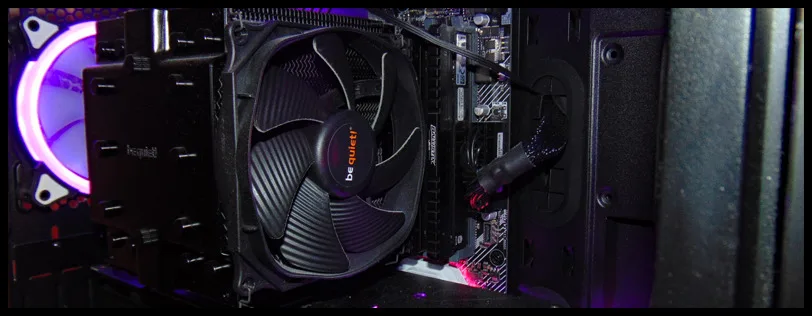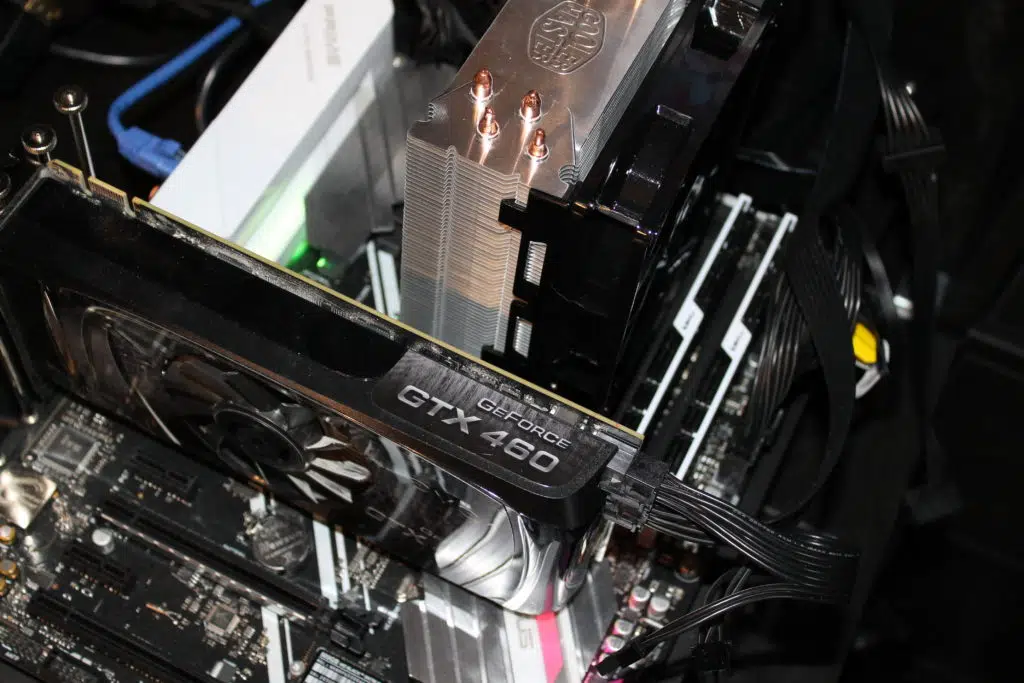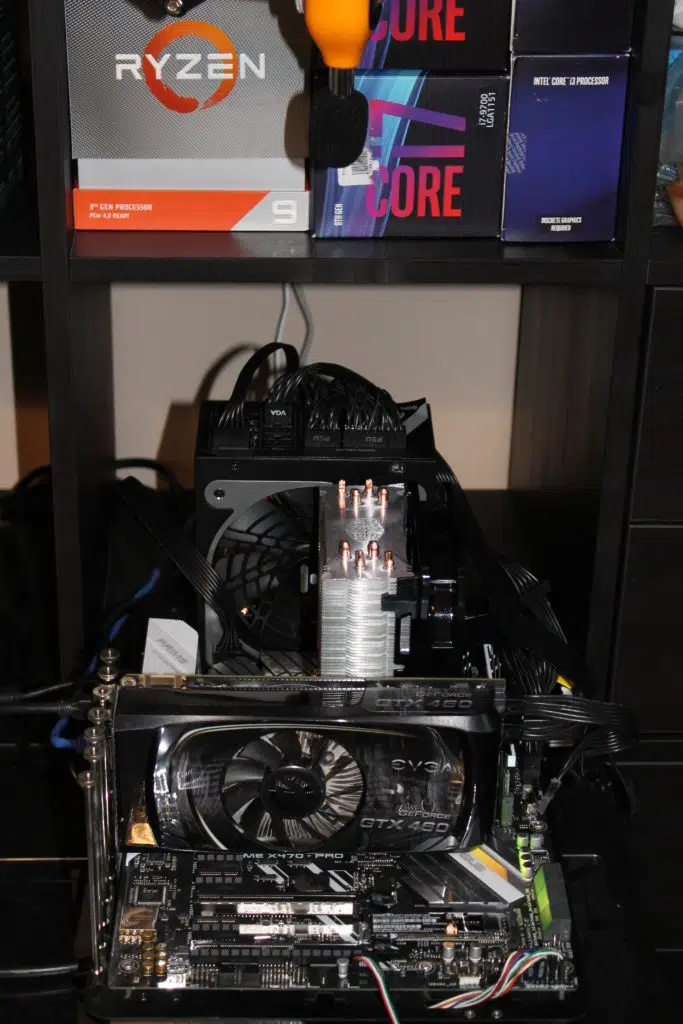Introduction

Earlier this year, we refreshed our AIO test bench table to test claims such as dissipating “500+ W” of heat. Since then, we’ve seen a number of AIOs come across the test bench and there’s been one thing in common – the overclocked 10980XE simply demolishes anything with less than a 280mm radiator. Even at stock clocks, a cooler like the Cooler Master Hyper 212 EVO would go nuclear after about a minute under load. Using a bit of common sense, we decided that we should set up a separate air cooling testing rig that puts CPU coolers into a fight that they have a chance at winning.
Looking through our inventory, a Ryzen 7 2700X and ASUS PRIME X470-Pro board combo was recently freed up after Brent’s GPU testing rig was upgraded to a Ryzen 7 3700X based platform, so it was drafted for being in the right place at the right time to test cooling solutions. Let’s step through the main components of the rig to see how air coolers will be tested.
AIO Test System
CPU
As mentioned earlier, the heart of the new air cooling testing rig is the Ryzen 7 2700X, an 8 core and 16 thread Zen+ processor that was released in April of 2018. It sports a 105W TDP and can be used on a variety of AM4 chipsets that are available in the marketplace. For testing purposes, we disabled PBO and have locked the all-core speeds to eliminate the variability that gets introduced by dynamic boosting of the CPU speed. We also set Line Load Calibration to Level 3 within the BIOS. For a frame of reference, power consumption at the wall while running CineBench R20 is as follows:
| All Core Frequency | Voltage | Power Draw (Wall) |
|---|---|---|
| Idle | Default/Auto | 58W |
| 3700 MHz | Default/Auto | 185W |
| 4100 MHz | 1.3875V | 255W |
Motherboard
The motherboard selected for duty is the ASUS PRIME X470-Pro. This is an older X470 based motherboard that still does a great job of running AM4 based chips.
Video Card
Due to recent card launches, we’re a bit short on video cards in the underground bunker, so for now, we’ve sourced an EVGA GeForce GTX 460 FPB to use for the time being. All we can really say here is that we’re glad we’re not doing game performance testing with it.
Memory and Storage
For memory, we have equipped the system with a pair of 8GB sticks of G.SKILL Trident Z F4-3600C16D-16GTZKW for a total of 16GB.
For storage, we picked up a 500GB Western Digital Black SN 750 NVME M.2 drive.
Power Supply
For the power supply, we’ve tapped the FSP Hydro PTM 750W PSU. This unit has more than enough power up its sleeve to run our tests.
Case
For the case, we’ve picked up a standard open test bench to hold everything together.

Testing Methodology
Setup
The test setup is very straight forward. We mount the air cooler per the manufacturer’s instructions on the motherboard and instead of using the stock thermal paste provided with each air cooler, we’re using a thin layer of Arctic Cooling MX-2, 2019 Edition. While testing for the best “out of box” experience using the thermal paste supplied with each unit, it’s a bit difficult to remount air coolers that include a thermal pad instead of paste, so we’ve evened the playing field up here intentionally.
Testing
For testing, we tried out a number of different methods to load down cores and generate heat. Ultimately, we found that CineBench R20 created a real-world load on the processor and generated more heat than other options out there. Each pass for testing will be run for at least 10 minutes (or longer, if a thermal equilibrium is not reached) and the temperatures will be observed throughout the run and recorded in degrees Celsius. As noted earlier, we have disabled Performance Boost Overdrive (PBO) to eliminate variations in heat generated by the CPU due to boosting. In Windows, we leave the power management on default after installing the AMD chipset drivers, which is the “AMD Balanced” power profile.
For air coolers, we will run tests at the following frequencies:
- Stock Clock / Stock Voltage (3700MHz all-core), PBO Off
- 4100 MHz / 1.3875V, PBO Off
For each testing frequency, we will run the fans at approximately the following levels:
- Maximum Fan Speed
- 1500 RPM
- 1000 RPM
- 600 RPM (or minimum, per fan capability)
If the CPU thermally throttles or crashing during testing, we will note that and move on without testing lower fan speeds at whichever threshold it “failed” at.
During testing, we will also collect sound pressure level data from our RISEPRO Decibel meter mounted on a boom arm pointed directly at the radiator fans at a distance of 1.5 ft to measure the noise level.
Final Points
To recap, we’ve assembled a real-world test rig that is capable of providing a consistent level of heat to the air coolers that we strap to it. Over time, we’ll test everything that we can get our hands on to see what cooler gives you the best performance and best bang for the buck.


